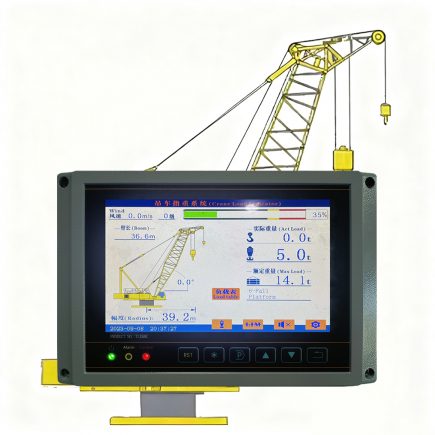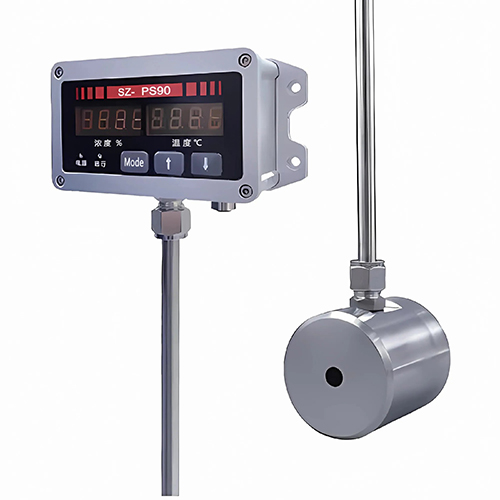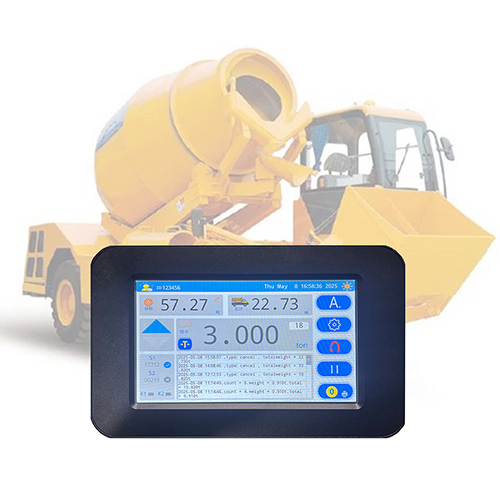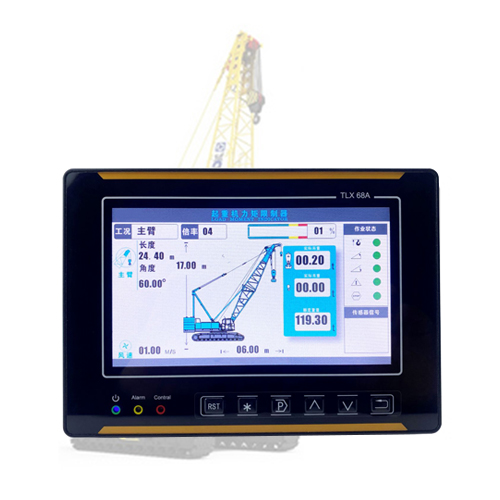As the “safety sentinel” of hoisting machinery, the Load Moment Indicator (LMI) also knows as Safe Load indicator(SLI),it must stably perform its monitoring and early-warning functions in a variety of complex working conditions. In different operation scenarios, environmental interference, differences in operators’ operating habits, and sudden risks will directly affect the performance of the LMI. Therefore, SEEZOL has optimized targeted response strategies to ensure its accuracy and reliability, building a solid safety defense line for hoisting operations.
1. Coping with Complex Operating Environments: Adapting to Diverse Scenarios with Anti-Interference Design

Hoisting operations often face harsh environments such as high temperature, high humidity, strong electromagnetic fields, and dust, which easily lead to deviations in LMI data collection and hardware failures. In view of the characteristics of different environments, the SEEZOL team has strengthened adaptability from both hardware and software aspects: In high-temperature environments (such as metallurgical plants), high-temperature-resistant components and heat dissipation structure designs are adopted to expand the operating temperature range of the sensor to -40℃~85℃, avoiding the attenuation of circuit performance caused by high temperatures; In high-humidity or coastal salt spray environments, anti-corrosion coating treatment is applied to the hardware shell, and the sealing process is optimized to prevent short circuits caused by moisture intrusion; For scenarios with strong electromagnetic interference such as construction sites, electromagnetic shielding technology is used to reduce the impact of electromagnetic fields from surrounding equipment on LMI signals, and anti-interference algorithms are matched to filter clutter data, ensuring the collection accuracy of core parameters such as moment and amplitude. In addition, when operating in windy weather, the SEEZOL LMI is linked with a wind speed sensor to real-time correct the impact of wind force on the load moment. When the wind speed exceeds the safety threshold, it will automatically trigger an audible and visual early warning to remind the operator to suspend the operation.
2. Adapting to Differentiated Operating Habits: Guiding Standardized Operation with Intelligent Functions

Differences in operators’ operating habits, such as excessively fast operation speed and deviations in load estimation, easily lead to false alarms or missed alarms of the LMI. To adapt to different operating habits, the SEEZOL LMI achieves “active adaptation” through function optimization: On the one hand, for novice operators, a “Novice Mode” is developed to automatically reduce the sensitivity of early-warning response and extend the early-warning buffer time. At the same time, real-time prompts for operating specifications (such as “The current luffing speed is too fast, it is recommended to slow down”) are displayed on the interface to guide standardized operations; On the other hand, for experienced operators, the SEEZOL LMI provides a “Professional Mode”, which supports customizing early-warning thresholds and parameter display density to meet the needs of efficient operations. In addition, the LMI can analyze the operator’s operating habits (such as frequent emergency stops and overloading tendencies) through the data recording function, generate personalized operation reports, and assist managers in conducting targeted training to reduce safety risks caused by operating habits from the source.
3. Handling Emergencies: Reducing Risks with Rapid Response and Redundancy Design

Emergencies (such as load impact, sensor failure, and boom deformation) occur frequently in hoisting operations, and the SEEZOL LMI has the capabilities of rapid handling and emergency support. In the face of sudden load impact (such as sudden swing of the lifted object), the LMI is equipped with an instantaneous moment capture algorithm to identify abnormal moment changes within 100ms, immediately trigger an emergency early warning, and link with the hoisting machinery control system to automatically reduce the operating speed, preventing moment overrun; If a sensor failure occurs (such as the failure of the angle sensor), the multi-source data fusion function of the LMI will be activated, and cross-validation will be conducted through alternative data sources such as GPS positioning and Inertial Measurement Unit (IMU) to temporarily replace the data of the failed sensor, ensuring the continuity of monitoring; For structural abnormalities such as boom deformation, the LMI can identify the boom deformation trend through the comparison of historical data, issue early structural safety warnings in advance, and push maintenance suggestions. At the same time, the SEEZOL LMI adopts a dual-CPU redundancy design. When the main CPU fails, the backup CPU can switch seamlessly within 50ms to ensure the continuous operation of the system and gain valuable time for emergency handling.
In conclusion, the SEEZOL LMI proactively responds to the challenges of different working conditions through comprehensive strategies of environmental adaptation, habit guidance, and emergency handling. In the future, with the development of the Internet of Things and AI technology, the SEEZOL LMI will further realize the advance prediction and adaptive adjustment of working conditions, continuously improving the safety and efficiency of hoisting operations.








